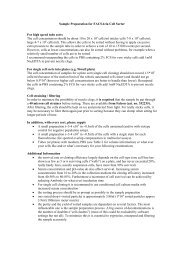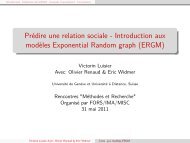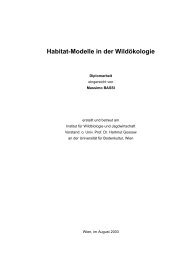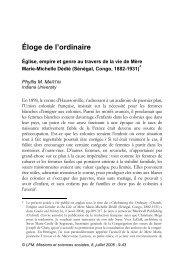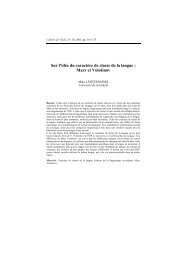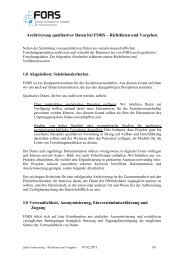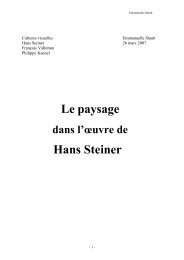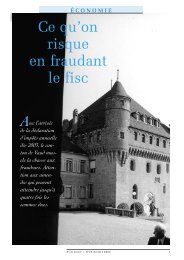conference programme book - European Survey Research ...
conference programme book - European Survey Research ...
conference programme book - European Survey Research ...
Create successful ePaper yourself
Turn your PDF publications into a flip-book with our unique Google optimized e-Paper software.
182 FRIDAY 22 JULY1 University of Durham, United KingdomSocial sciensts are constantly striving to achieve causal explanaons for a variety of movaons even when thecondions for making such explanaons are poorly idenfied or sasfied. During the past decade or so bothsocial sciensts and methodologists have called for specific idenficaon of underlying causal mechanismsand cricized the use of linear stascal models for causal explanaons, especially when such models areused on data collected from sample surveys. However, different types of social surveys have produced a hugeamount of data, and more data will be produced in the coming years. These two developments lead to thefollowing queson: what kinds of contribuon can these data make to causal analysis? I answer this quesonby discussing the role of social surveys and the subsequent stascal analyses in two tasks of causal analysis:theorizing causal relaons and measuring causal effects...4.12.3 Validity of images from binary coding tables. Some evidence through Textual Data AnalysisK. Fernández-Aguirre 0 , M. Garín-Marn 1 , J. Modroño-Herrán 11 University of the Basque Country, SpainIn recent years, the main objecve for most praconers is to idenfy interesng structures in the data sets,such as clusters of observaons, or relaonships among the variables. Principal axes methods such as PrincipalComponent Analysis (PCA) and Correspondence Analysis (CA)4.13 General human values, personality characteriscs and response stylesTo be held on July 22, 2011 from: 11:00 to 12:30, in room 318.Coordinated by:• Michael Braun - GESIS - Leibniz Instute for the Social Sciences, Germany• Timothy Johnson - University of Illinois at Chicago, United States4.13.1 Basic Human Values and Response StylesT. Johnson 1 , M. Braun 21 University of Illinois at Chicago, United States; 2 GESIS - Leibniz Instute for the Social Sciences, GermanyOn the basis of the first round of the <strong>European</strong> Social <strong>Survey</strong> Johnson et al. (2010) found associaons betweenthe individual- and country-level measures of some of the Schwartz scales and response styles. For example,individual conservaon values were associated posively with middling responses and negavely with extremeresponse styles. The associaon between individual level Conservaon and acquiescence was also posive, ashypothesized. Mean country level Conservaon, however, modified this relaonship in an unexpected direc-on, suggesng that the personal level effects of Conservaon on acquiescence are greater within countrieslower rather than higher in mean Conservaon.4.13.2 Personality, cultural, and socio-demographic predictors of value importance: Invesgang the roleof acquiescent response style in value rangsC. Beierlein 2 , E. Davidov 1 , S. Bokredenghel 2 , B. Rammstedt 21 University of Zürich, Switzerland; 2 GESIS - Leibniz Instute for the Social Sciences, GermanySchwartz’ basic human values explain various atudes and behaviors across cultures. Values are usually assessedusing self-report measures such as the Portrait Value Quesonnaire (PVQ; Schwartz et al., 2001). Likeother self-report quesonnaires, the PVQ is prone to the influence of response styles. For example, socialdesirability was found to be associated with higher rangs for parcular values (Schwartz et al., 1997).



